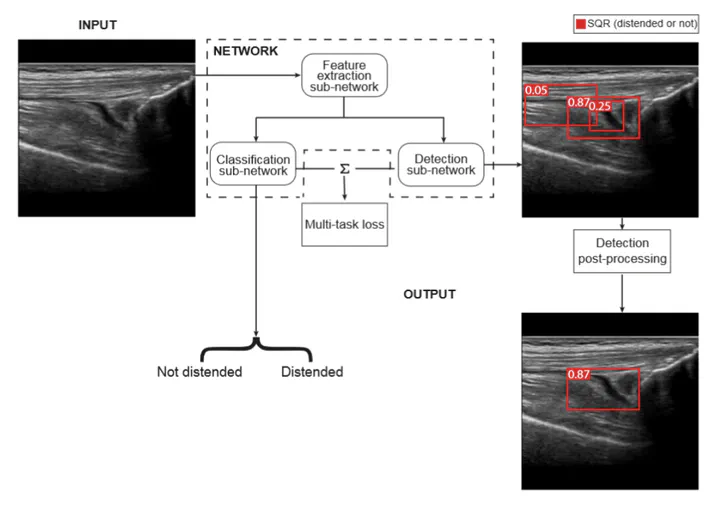Ultrasound detection of subquadricipital recess distension
Feb 1, 2023· ,,,,,,·
0 min read
,,,,,,·
0 min read
Marco Colussi
Gabriele Civitarese
Dragan Ahmetovic
Claudio Bettini
Roberta Gualtierotti
Flora Peyvandi
Sergio Mascetti
 MTL architecture
MTL architectureAbstract
Joint bleeding is a common occurrence for people with hemophilia and, if untreated, can result in hemophilic arthropathy. Ultrasound imaging has recently emerged as an effective tool to diagnose the distension of a joint recess caused by joint bleeding. However, no computer-aided diagnosis tool exists to support the practitioner in the diagnosis process. This paper addresses the problem of automatically detecting the subquadricipital recess of the knee and assessing whether it is distended in ultrasound images collected from patients with hemophilia. After framing the problem, we propose two different approaches: the first one adapts a one-stage object detection algorithm for the task, while the second one is a multi-task approach with a classification and a detection branch. The experimental evaluation, conducted with 483 annotated images, shows that the solution based on object detection alone has a balanced accuracy score of 0.74 with a mean IoU value of 0.66, while the multi-task approach has a higher balanced accuracy value (0.78) at the cost of a slightly lower mean IoU value.
Type
Publication
Intelligent Systems with Applications